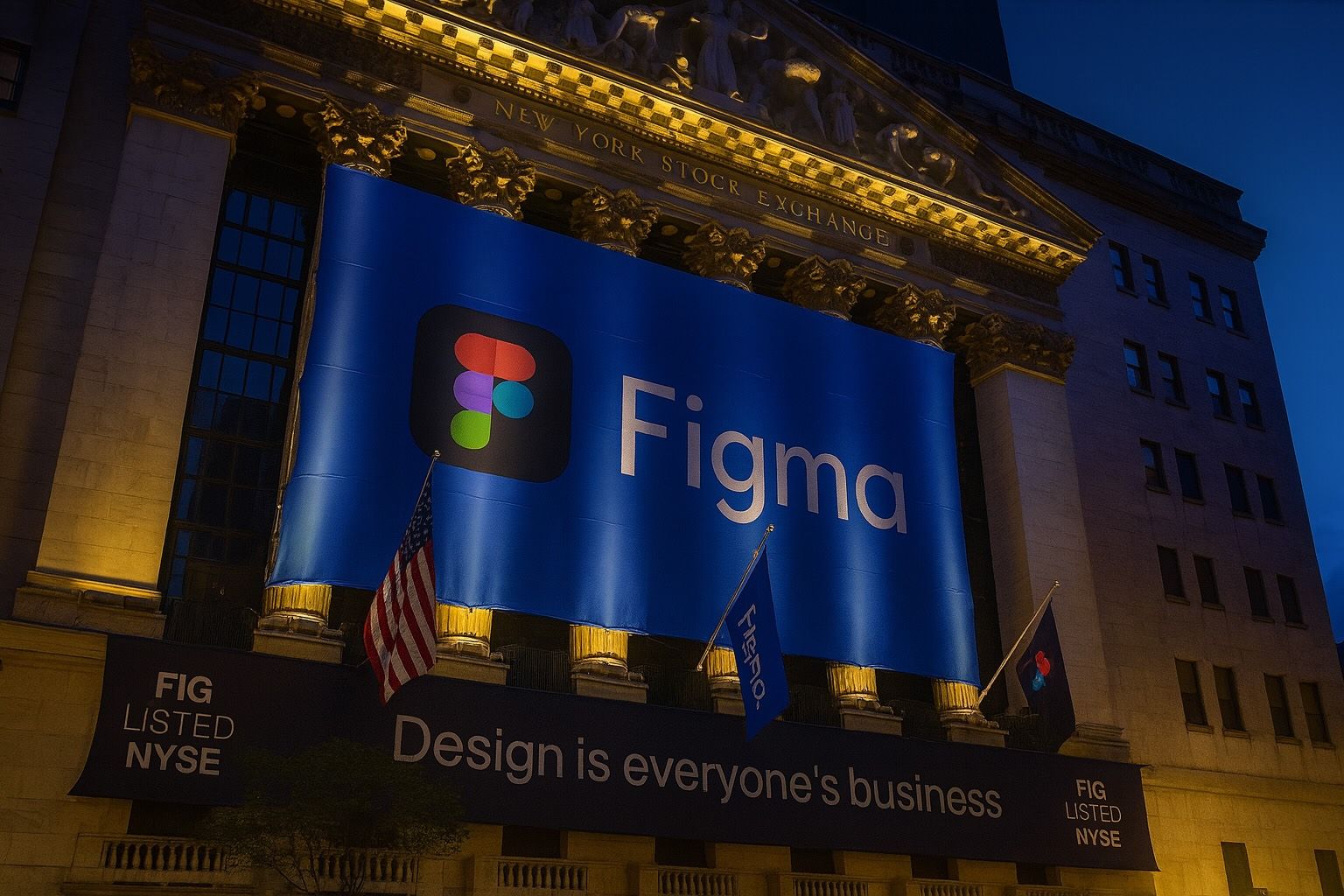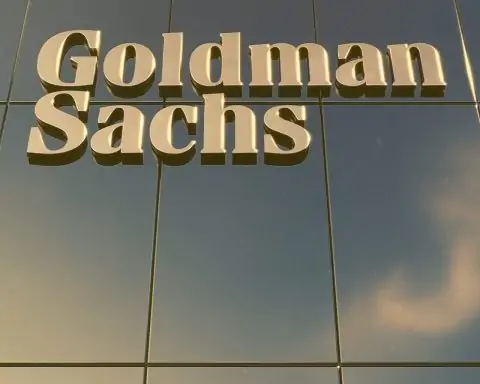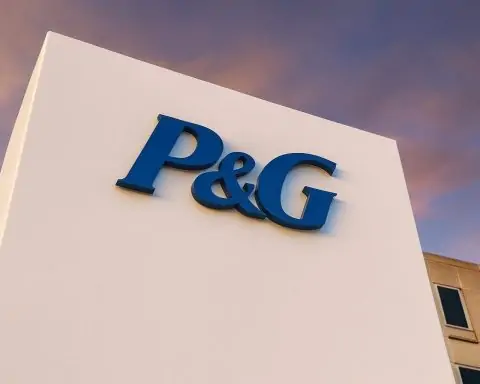- Blistering IPO & Volatile Aftermath: Figma (NYSE: FIG) exploded 250% on its first trading day – from a $33 IPO price to an $85 open and over $115 close, peaking at $122 on day two [1]. Since that July debut, FIG shares have plunged by over 50%, then fell another 26% in September alone [2] before bouncing in early October. As of Oct. 6, 2025, FIG trades around the mid-$50s – down by half from its high, but still ~80% above its IPO price [3] [4].
- Recent Earnings Underwhelm: Figma’s first earnings report as a public company (Q2’25) just beat forecasts – revenue +41% to $249.6 M (vs. $248.8 M est.) and $0.09 EPS vs. $0.08 est. [5]. But investors expected perfection: shares sank ~13% after-hours on Sept 3 as results “fell short of lofty expectations” [6]. FY2025 revenue guidance of ~$1.02 B (+37% YoY) only slightly topped estimates [7], reinforcing worries of growth deceleration.
- New Products & Blockbuster Debut: Figma has launched four new products in 2025 – including Figma Make (an AI tool that turns text prompts into app prototypes) – to expand its design platform [8]. The hype around Figma’s end-to-end design vision fueled its $68 billion first-day valuation, a debut so dramatic that FTC Chair Lina Khan praised Figma’s IPO as a win after regulators blocked Adobe’s $20 B takeover bid [9].
- Market Reaction & Outlook: Analysts say FIG was “priced for perfection” at >200× earnings, so even strong numbers couldn’t justify its sky-high valuation [10]. “Solid [earnings] cannot carry that many layers without some flattening,” quipped one strategist, noting the stock’s rich pricing was built on future story – and management’s outlook disappointed [11]. In August–September, FIG tumbled ~55% as reality set in, even while the S&P 500 rose over 3% in that span [12]. The post-IPO honeymoon is clearly over – Figma now must prove it can sustain growth (33% YoY Q3 guidance, down from 46% in Q1) and fend off rivals in the design-collaboration space to revive investor confidence [13] [14].
- Analyst Forecasts – Caution Prevails: Wall Street is mixed on FIG. Of 10 analysts, 7 rate it “Hold” versus 3 “Buy,” and the median 12-month price target is ~$67 (about 15% above recent levels) [15]. Price targets range widely (low ~$48, high $85), reflecting uncertainty [16]. Bulls argue the sell-off is overdone – citing Figma’s still-robust 41% growth, 129% net retention rate, and positive margins as signs of a strong franchise. A recent analysis called the dip a “buying opportunity” given solid customer metrics and improving cash flow. However, skeptics note Figma’s growth is slowing and increasingly driven by price hikes – not something it can repeat often “without risking excessive customer churn,” as one observer warned [17]. With FIG stock still ~25× forward sales (down from an eye-watering ~66× at its peak [18]), even after a 55% drop, some expect it to underperform the market from here [19].
Current Stock Price & Performance Trends
Figma’s stock has been on a wild ride since its summer IPO. After pricing at $33/share (July 2025), FIG opened at $85 and soared to $122 within two trading days [20] – a ≈270% jump that briefly valued the UI design software maker near $68 billion. That frothy debut came amid an upbeat tech IPO market, and even U.S. regulators took note: “Figma’s IPO [was] valued at about $68 billion on its first day,” FTC Chair Lina Khan lauded, highlighting it as a victory following the blocked $20 billion Adobe bid for Figma [21]. However, gravity hit quickly. FIG gave up those gains in a hurry – plunging 39% in August (its first full month) and another 26.2% in September [22] as investors reassessed the lofty valuation. By the end of Q3, Figma was about 60% below its post-IPO high.
There are signs FIG may be trying to find a floor. After closing at $53.04 on Oct 3 [23], the stock rebounded in early October – trading back in the high-$50s and even topping $60 intraday on Oct 6 [24]. Some traders chalk this up to bargain-hunting after two brutal months, while others note that short-term momentum can swing wildly for recent IPOs. Year-to-date (since its IPO), FIG remains up ~60% from its IPO price – a solid return on paper – but that’s cold comfort to those who bought at the peak. Volatility is likely to persist as the market digests what Figma’s real growth and value trajectory look like post-hype.
Major Developments and News (Last Few Days)
In the past week, Figma’s own news flow has been relatively quiet – the company is in a post-earnings quiet period, with its next earnings due in early December. However, a few notable items and context from recent days:
- Earnings Aftermath: On September 3, Figma reported its second-quarter 2025 results, its first as a public company. Headline numbers were technically good – revenue up 41% year-over-year to $249.6 million (just beating estimates of ~$248.8 M) and adjusted EPS of $0.09 (vs. $0.08 expected) [25]. But expectations were sky-high. Management’s conference call and guidance failed to wow Wall Street, triggering a sell-off (FIG sank ~13% in after-hours trade) [26]. As one observer noted, “Figma’s high valuation was built on [future] story… [and] outlook disappointed” [27]. This reaction accounted for much of August’s share price pain.
- Product Launches & Vision: Figma hasn’t announced new products this week, but it’s worth noting the company’s flurry of recent product rollouts. In 2025 alone, Figma doubled its product lineup, launching four new tools to extend its collaborative design platform [28]. Notably, Figma Make – an AI-powered module that transforms text prompts into working app prototypes – debuted to much fanfare [29]. Other additions like Figma Draw, Sites, and Buzz (for digital illustration, web publishing, and marketing design) reflect Figma’s ambition to cover “every aspect of product development — from ideation to coding and shipping” in one ecosystem [30] [31]. This aggressive innovation was a key selling point in the IPO hype. It also underscores why Figma is spending heavily on R&D: these launches aim to keep users engaged and justify Figma’s premium pricing model.
- Financial Results & Guidance: Figma’s Q2 earnings were also accompanied by its first public forecast. For Q3 2025, the company guided to $263–265 M revenue (≈33% YoY growth), and for the full year 2025 it expects $1.021–1.025 B revenue – about +37% YoY [32] [33]. While strong in absolute terms, this represents a sharp deceleration from prior growth rates (over 46% in Q1). In fact, hitting the midpoint implies Q4 growth could slow to ~30% [34]. The guidance was only a hair above analyst consensus (~$1.01 B) [35], suggesting Figma’s growth surge is normalizing faster than optimists hoped. Notably, Figma did achieve positive operating income in Q2 (1% GAAP margin, 5% non-GAAP) [36] – a rarity for a young tech IPO – thanks to strong gross margins and disciplined cost control. This indicates Figma is balancing growth with a path to profitability, an encouraging sign in an era when investors are rewarding bottom-line improvement.
- Partnerships & Investments: No major partnerships were publicized in the past few days, but one interesting tidbit emerged: Figma dipped its toes into venture investing. The company participated in a $100–120 million Series E funding round for Supabase – an open-source backend database startup – as a new strategic investor [37]. This suggests Figma is looking to strengthen its ties to the developer ecosystem (Supabase’s tools could complement Figma’s Dev Mode and app design focus). It’s a small development, but it shows Figma leveraging its cash (over $1.6 B on hand [38]) to potentially bolster its platform via strategic bets. We’ll watch if Figma forges more alliances or M&A moves; notably, in Q2 it closed two small acquisitions (animation tool Modyfi and CMS platform Payload) [39] to enhance its product capabilities.
In summary, the last few days haven’t seen bombshell announcements from Figma, but the context is a company digesting its turbulent IPO chapter. The key recent development remains the market’s reaction to Figma’s first earnings and outlook, which continue to shape the stock’s trajectory.
Market Reaction and Expert Commentary
Wall Street’s reaction to Figma’s story has been whiplash-inducing. After the euphoric IPO, sentiment turned sharply as investors scrutinized Figma’s fundamentals. The Q2 earnings “miss” (relative to lofty hopes) became a focal point for commentary:
- Valuation Comeuppance: Many analysts zeroed in on Figma’s extreme valuation as the root cause of its stock swoon. At $122, FIG was trading around 65–70× forward sales – a multiple usually reserved for the fastest-growing, category-dominating SaaS names [40]. As Michael Ashley Schulman of Running Point Capital put it, “The stock had been priced for perfection at over two hundred times expected earnings,” meaning even great results would “not carry that many layers without some flattening.” [41] The design pun (“layers”) aside, his point is clear: expectations were so high that anything less than a blowout would trigger a correction. Indeed, with Figma’s 41% growth now moderating and 37% FY guidance only inline, the market is re-rating the stock’s multiples downward.
- Growth Quality and Sustainability: Experts also debate how sustainable Figma’s growth is. In its IPO filing and first reports, Figma showed impressive expansion, but some of that is coming from pricing strategy. Figma has been raising prices or upselling existing customers (reflected in its stellar 129% net dollar retention [42] [43]). The Motley Fool’s Jon Quast notes “much of the growth it’s projecting comes from charging higher prices,” which, if overused, “can’t be [done] too regularly without risking excessive customer churn.” [44] In other words, Figma may be approaching the limits of how much more it can squeeze revenue from the same users, and will need to drive more customer adoption (or new product revenue streams) to keep growth humming. This concern contributes to a more cautious outlook among some experts, especially with competition looming (Adobe and others are keen to close the gap after Figma leapfrogged them in UX design collaboration).
- Leadership and Long-Term Vision: Figma’s CEO Dylan Field has tried to keep the team focused on the long run, reportedly telling employees to ignore the stock’s day-to-day swings [45]. Bulls find solace in Figma’s mission and market – digital product design remains a huge, evolving field, and Figma is a leader with a beloved product ecosystem. As long as the company continues to innovate (especially in AI-assisted design, where it’s an early mover via Figma Make) and expand its user base (including enterprise teams beyond its core design audience), many believe FIG can grow into a more reasonable valuation. The market’s initial over-exuberance has now been tempered; what remains is a test of execution. As one Seeking Alpha commentator titled, “Don’t Miss This Buying Opportunity”, arguing that Figma’s “positive business fundamentals” – from strong gross margins to a cash-generative model – could make the current dip a chance for long-term investors to get in before the company re-accelerates.
- Comparisons and Sentiment: Contextually, Figma’s boom-to-bust pattern isn’t unique in 2025. Several high-profile tech IPOs (from chip designer Arm to grocery-delivery Instacart earlier in the cycle, and more recent debuts like fintech Klarna or crypto firm Circle) have seen initial pops followed by pullbacks as excitement fades. But Figma’s swing was particularly extreme, perhaps owing to the pent-up demand in its niche (design collaboration) and the symbolism of its IPO (coming after Adobe’s failed acquisition). The broader tech sector has had a mixed year – megacap tech stocks are mostly up, but high-growth “story stocks” without proven earnings have been volatile amid rising interest rates. In September, while Figma was sliding, the 10-year U.S. Treasury yield jumped to multiyear highs, which disproportionately pressures richly-valued growth stocks. This macro factor likely amplified FIG’s decline, as investors rotated toward safer or value-oriented plays.
Going forward, market sentiment on FIG remains divided. The stock’s sharp rebound on Oct 6 (up over 10% intraday) hints that some traders believe the worst is over, at least in the short term. Yet, confidence will truly return only if Figma can deliver consistent results that beat expectations, or otherwise surprise skeptics – whether via re-accelerated user growth, new revenue streams (perhaps monetizing its large community or add-on services), or simply several quarters of execution that rebuild trust. Until then, commentary suggests investors should brace for continued twists and turns in FIG’s price.
Analyst Forecasts and Investment Recommendations
What are analysts saying now? Despite Figma’s innovative business and strong growth, the consensus on Wall Street has cooled along with the stock:
- Ratings: According to MarketBeat, 10 analysts currently cover FIG, yielding a consensus rating of “Hold.” Seven analysts advise holding the stock, only three recommend buying, and none recommend selling [46] [47]. This cautious stance reflects the balance of Figma’s long-term potential against its near-term challenges (slowing growth, high valuation). Essentially, many analysts are in “wait-and-see” mode until Figma proves itself further as a public company.
- Price Targets: FIG’s 12-month price targets also illustrate tempered expectations. The average target is about $67–68 per share [48], roughly 14% above the recent ~$59–60 trading range. The high target of $85 suggests some bulls think Figma can retest its IPO-day highs over the next year, while the low target of $48 implies others fear additional downside [49]. The spread is quite wide, underscoring uncertainty about Figma’s trajectory once the post-IPO dust fully settles. Notably, even the mean target (~$67) is well below Figma’s $122 peak, signaling that analysts do not foresee a return to euphoric valuations soon.
- Bull vs. Bear Cases:
- Bulls argue that Figma’s fundamentals remain healthy and that the stock’s rout is overdone. They point to ~40%+ revenue growth, improving profitability, and a product that is mission-critical for a growing number of customers. Figma’s competitive moat – a huge community of designers/developers and integration into workflows – gives it pricing power and long runway for expansion. For example, a contributor on Seeking Alpha highlighted Figma’s solid customer retention and cash flow metrics, suggesting the business has a durable core and that shares could rebound as the company continues to execute. Bulls also note that after the sell-off, valuation multiples have eased (now ~25× forward sales vs. 60×+ at the top), which could attract growth-oriented investors who missed the IPO pop.
- Bears/Cautious voices, on the other hand, emphasize that risks are rising. Figma’s decelerating growth rate raises questions about market saturation or intensifying competition (Adobe XD, Sketch, and others are still in the fight, and Adobe is integrating Figma-like features into its suite). If revenue growth slips to ~30% by Q4 as guided [50], Figma might no longer justify premium valuation metrics for a “hyper-growth” company. Additionally, as a newly public firm, Figma faces execution risks – e.g. the need to satisfy shareholder expectations every quarter, manage expenses, and perhaps cope with insider selling as lock-up periods expire (a chunk of employee shares became eligible for sale in September once FIG stayed 25% above IPO price for a period [51]). Some analysts also worry about macro headwinds: in a higher interest rate environment, investors are less forgiving of companies with thin margins and high price-to-sales ratios. The Motley Fool piece from late September bluntly concluded that Figma might underperform the market from here given these factors, advising that patience is warranted before jumping in [52].
- Recommendations: For investors, the split essentially comes down to time horizon and risk tolerance. Long-term believers in Figma’s vision (the “Adobe of the cloud era”) see the current price as a potentially attractive entry – a chance to own a category leader that could compound growth for years, now at a much saner valuation than in August. They often recommend accumulating on dips, with the caveat that position sizing should account for volatility. Meanwhile, more cautious advisors suggest waiting for clearer signs of stabilization – perhaps one or two earnings beats or a trough in the growth deceleration – before committing funds. The consensus “Hold” encapsulates this middle ground: neither a screaming buy nor a reason to bail out, but a story to watch closely.
In terms of concrete calls, we’ve seen a few adjustments: at least one major bank reportedly initiated coverage with a Neutral/Hold rating in September, citing valuation concerns, while some smaller research outfits have issued buy ratings focusing on Figma’s market opportunity in software design. As of now, however, no strong buy ratings are evident, and the tone of analyst reports is tempered. They frequently acknowledge Figma’s strengths (dominant product in a niche, strong revenue retention) but temper that with reminders that FIG is a high-risk stock in the near term.
Bottom line: The analyst community is effectively saying “great company, uncertain stock.” They’ll be looking to upcoming earnings (Q3 results in early Dec) for signs that Figma can beat its conservative guidance or deliver an upside surprise. A few solid quarters could prompt upgrades or higher targets. Conversely, any further disappointments or guidance cuts could see targets come down further. Investors should keep an eye on how Figma navigates its first year as a public company – it will heavily influence whether FIG is seen as the next big tech winner in the making or a cautionary tale of IPO hype.
Broader Tech Sector Context
Figma’s stock story doesn’t exist in a vacuum – it’s part of a larger narrative in the tech sector and equity markets in 2025:
- Tech IPO Revival: After a drought in 2022–2023, 2025 marked a revival of tech IPOs, and Figma’s was among the most prominent. Its blockbuster debut, alongside other high-profile offerings, fueled optimism that the “IPO window” had reopened for unicorn startups. Indeed, Q3 2025 saw the busiest IPO activity since early 2022 [53], with investors eagerly snapping up new tech listings. Figma’s huge first-day pop was a hallmark of this renewed appetite. However, as the year progressed, a pattern emerged: initial euphoria gave way to sober second thoughts. Figma exemplified this, as did some peers – for instance, other 2025 IPOs in fintech and biotech saw post-pop pullbacks. This reflects a market trying to calibrate the right prices for growth firms in a new macro environment.
- Rising Rates, Rotation to Value: A key backdrop to all growth stocks in 2025 is the high-interest-rate climate. Central banks have kept rates elevated to combat inflation, sending bond yields to levels not seen in over a decade. This has a knock-on effect on equity valuations, particularly for high-growth, high-multiple stocks like Figma. Simply put, when the risk-free rate (Treasuries) is 4–5%+, investors demand more return (or pay less) for risky stocks. That’s one reason why many richly valued tech names faced pressure this year even when their businesses performed well. Figma, being newly public and initially extremely valued, was especially vulnerable to this dynamic. When September brought a spike in yields, it’s no coincidence that growth tech sold off hard, Figma included. Meanwhile, sectors like energy and value stocks held up better, a rotation that hurt tech-heavy indices in late Q3. For Figma investors, broader market forces like Fed policy and interest rates are thus relevant: a pivot to lower rates in 2026 could help lift valuations, whereas further rate fears could keep multiples in check.
- Competitive Landscape: The tech sector context also includes the competitive chessboard. Figma operates at the intersection of design and developer tools – a hot area where Big Tech and startups alike are active. Adobe’s attempted acquisition of Figma (blocked in 2023/24) highlights how much incumbents covet Figma’s territory. Since the IPO, Adobe has been touting improvements to its XD and Creative Cloud offerings, and other rivals (e.g. InVision, Sketch, emerging AI design startups) are looking to capitalize if Figma shows any weakness. Investors are aware that Figma’s success will attract competition, which could cap its growth or force continued heavy investment. The broader context is that tech giants from Adobe to Microsoft are integrating collaborative and AI-driven design features across their platforms – meaning Figma must run fast to stay ahead. This competitive backdrop is not unique to Figma; many tech IPO darlings face a similar “giants are coming” narrative (think: how Zoom faced Microsoft Teams). How well Figma navigates this – possibly by leveraging its first-mover advantage and innovative culture – will factor into its stock’s long-term fate.
- Market Sentiment on Tech: Finally, Figma’s rollercoaster mirrors the shifting sentiment on tech stocks in general. Early 2025 saw a wave of optimism – tech was “back”, AI was the buzzword boosting valuations, and anything cloud or AI-related (which Figma checks both boxes: cloud software + some AI features) got a premium. By the fall, sentiment sobered: there’s still enthusiasm for genuinely transformative companies, but investors have become more selective, distinguishing profitable growth from hype. The NASDAQ index’s performance has been choppy, with mega-caps carrying much of the gains while many mid-cap tech names lag. Figma, now a mid-cap stock (~$25–30B market cap at current prices [54]), fits into that story of uneven fortunes in tech. As a newly public mid-cap, it doesn’t have the safety of an Apple or Google, so it trades more on narrative and quarterly results. Broader risk factors – from geopolitical issues to sector rotations – can whipsaw stocks like FIG more intensely. For instance, any rotation out of high-growth tech (due to external news or risk-off sentiment) could hit Figma disproportionately. Conversely, if tech broadly rallies (say, on signs of economic easing or a new wave of AI-driven productivity gains), Figma could ride that wave up again.
In essence, Figma’s journey so far encapsulates both the promise and pitfalls facing tech IPOs in 2025. It arrived to market with huge fanfare, has a strong underlying business, but also carries big expectations in an unforgiving market. The stock’s future will not only depend on Figma’s own execution but also on the climate for tech stocks at large – something investors should keep in mind.
Conclusion
Figma, Inc. has experienced a dizzying rise and fall on the public markets in just a few months. From its headline-grabbing IPO surge to the subsequent 50%+ collapse in its share price, FIG has been a case study in how quickly sentiment can shift for a hot tech stock. As of early October 2025, the company finds itself at a crossroads: it’s still highly valued (around 25× forward sales), but not as astronomically as before; it’s still growing fast (~37% projected this year), though not as blisteringly as hoped; and it’s still a market leader in its niche, albeit with intensifying competition nipping at its heels.
Investors and analysts are split – some see a compelling long-term growth story now trading at a more reasonable price, while others see a stock that could drift lower if Figma can’t consistently beat expectations. The coming quarters will be crucial. Figma will need to validate its business model at scale: can it continue winning new customers (and expanding old ones) to offset the inevitable growth slowdown from its current 40% levels? Will its bet on AI features and an expanded product suite pay off in monetization and wider adoption? Can it maintain profitability while investing for growth, striking that delicate balance Wall Street wants?
The market’s reaction so far has been a wake-up call – reminding Figma (and its investors) that public markets demand both growth and realistic guidance. The management team’s comments express confidence that design software is a large and still-growing opportunity, and they highlight positive indicators like strong net retention (existing users spending more) and an addressable market that extends beyond designers to entire product teams. If those themes play out, Figma could well regain its momentum over time.
For now, FIG stock remains a volatile bet. In the near term, catalysts like the Q3 earnings report (and any updates on 2025 guidance) will likely drive the next big moves. Longer-term, Figma’s ability to execute on its ambitious vision – to be the all-in-one platform where the world designs and builds digital products – will determine if early investors’ optimism was justified.
Bottom line: Figma’s stock may have lost some of its shine since July, but the company’s story is far from over. With a market-leading product, significant growth runway, and now public-market capital to deploy, Figma has the tools to succeed – but it will need to navigate investor expectations as adeptly as it does software design. FIG will be one to watch in the coming year as a bellwether of whether 2025’s big tech IPOs can live up to their billing, or whether they’ll caution others to temper their enthusiasm. The next chapters in Figma’s public journey will be critical in answering that question, and both Wall Street and Silicon Valley will be paying close attention.
Sources:
- Reuters – Figma’s first earnings underwhelm, shares tumble [55] [56]
- ts2.tech News – Figma Q2 results and post-IPO reality check [57] [58]
- The Motley Fool via Nasdaq – Figma’s stock drops 59% from peak: why and what next [59] [60]
- Yahoo Finance (via Motley Fool) – Why Figma fell 26% in Sept 2025 [61]
- MarketBeat – Analyst consensus and price targets for FIG [62] [63]
- ts2.tech – Tech IPOs 2025 & Lina Khan on Figma’s $68B debut [64]
- Figma Investor Relations – Q2 2025 Earnings Press Release [65] [66]
References
1. www.nasdaq.com, 2. www.sharewise.com, 3. stockanalysis.com, 4. www.nasdaq.com, 5. www.reuters.com, 6. www.reuters.com, 7. www.reuters.com, 8. www.reuters.com, 9. ts2.tech, 10. www.reuters.com, 11. www.reuters.com, 12. www.nasdaq.com, 13. ts2.tech, 14. www.nasdaq.com, 15. www.marketbeat.com, 16. www.marketbeat.com, 17. www.nasdaq.com, 18. www.nasdaq.com, 19. www.nasdaq.com, 20. www.nasdaq.com, 21. ts2.tech, 22. www.sharewise.com, 23. stockanalysis.com, 24. stockanalysis.com, 25. www.reuters.com, 26. www.reuters.com, 27. www.reuters.com, 28. www.reuters.com, 29. www.reuters.com, 30. www.reuters.com, 31. investor.figma.com, 32. investor.figma.com, 33. investor.figma.com, 34. www.nasdaq.com, 35. www.reuters.com, 36. investor.figma.com, 37. ground.news, 38. investor.figma.com, 39. investor.figma.com, 40. www.nasdaq.com, 41. www.reuters.com, 42. investor.figma.com, 43. investor.figma.com, 44. www.nasdaq.com, 45. finance.yahoo.com, 46. www.marketbeat.com, 47. www.marketbeat.com, 48. www.marketbeat.com, 49. www.marketbeat.com, 50. www.nasdaq.com, 51. www.reuters.com, 52. www.nasdaq.com, 53. stockanalysis.com, 54. stockanalysis.com, 55. www.reuters.com, 56. www.reuters.com, 57. ts2.tech, 58. ts2.tech, 59. www.nasdaq.com, 60. www.nasdaq.com, 61. www.sharewise.com, 62. www.marketbeat.com, 63. www.marketbeat.com, 64. ts2.tech, 65. investor.figma.com, 66. investor.figma.com









